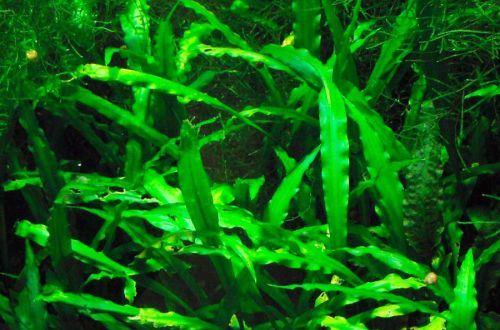
Cryptocoryne spiral
Cryptocoryne spiralis, scientific name Cryptocoryne spiralis. In nature, it is widely distributed in Asia in southern India and Bangladesh, growing on the banks of rivers and seasonal flooded wetlands, as well as as weeds in rice fields.

This is one of the first types of cryptocorynes that received a scientific description back in 1779 (Retzius, Anders Jahan). It is very variable, depending on the region and growing conditions, the appearance of the plant changes, so in 1993 it was divided into two varieties of Cryptocoryne spiralis var. Spiralis and Cryptocoryne spiralis var. Cognatoides. Ten years later, in October 2013, biologists established the presence of several more intermediate forms of Cryptocoryne spiralis var. caudigera and Cryptocoryne spiralis var. huegelii.
The variety of forms will not allow an accurate description of this plant species. The leaves are collected in a rosette, forming a bush. Leaf blades, as a rule, are long, ribbon-like, in some cases with a pronounced petiole. The edge is slightly wavy. The color can be either bright green or brownish. Submerged and surface sprouts are also noticeably different. In the air, pouring is more rigid, elastic and half as long, about 15 cm, against 30 cm under water.
Outwardly, this plant is very similar to other closely related and equally variable species, such as Cryptocoryne reverse spiral and Cryptocoryne albida. Until it blooms, it is almost impossible to distinguish them externally. It is the shape of the inflorescence that is the main distinguishing feature. In Cryptocoryne spiral, the twisting occurs clockwise, in the rest it is counterclockwise.
Regardless of the specific variety, it is considered an unpretentious and hardy plant. Although flowering is rare in the artificial environment, reproduction will nevertheless occur through the appearance of lateral processes. In nutrient soil, it is able to quickly form a dense accumulation.



